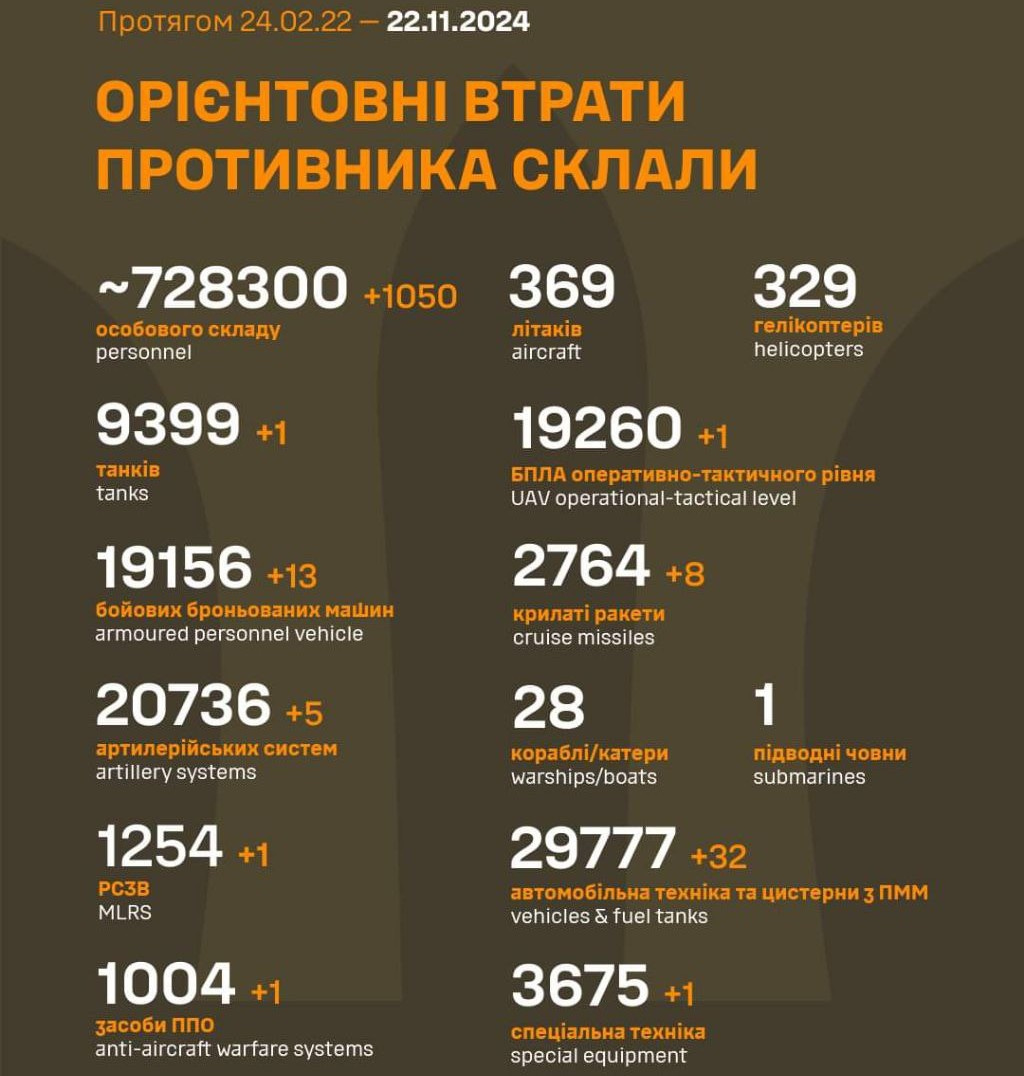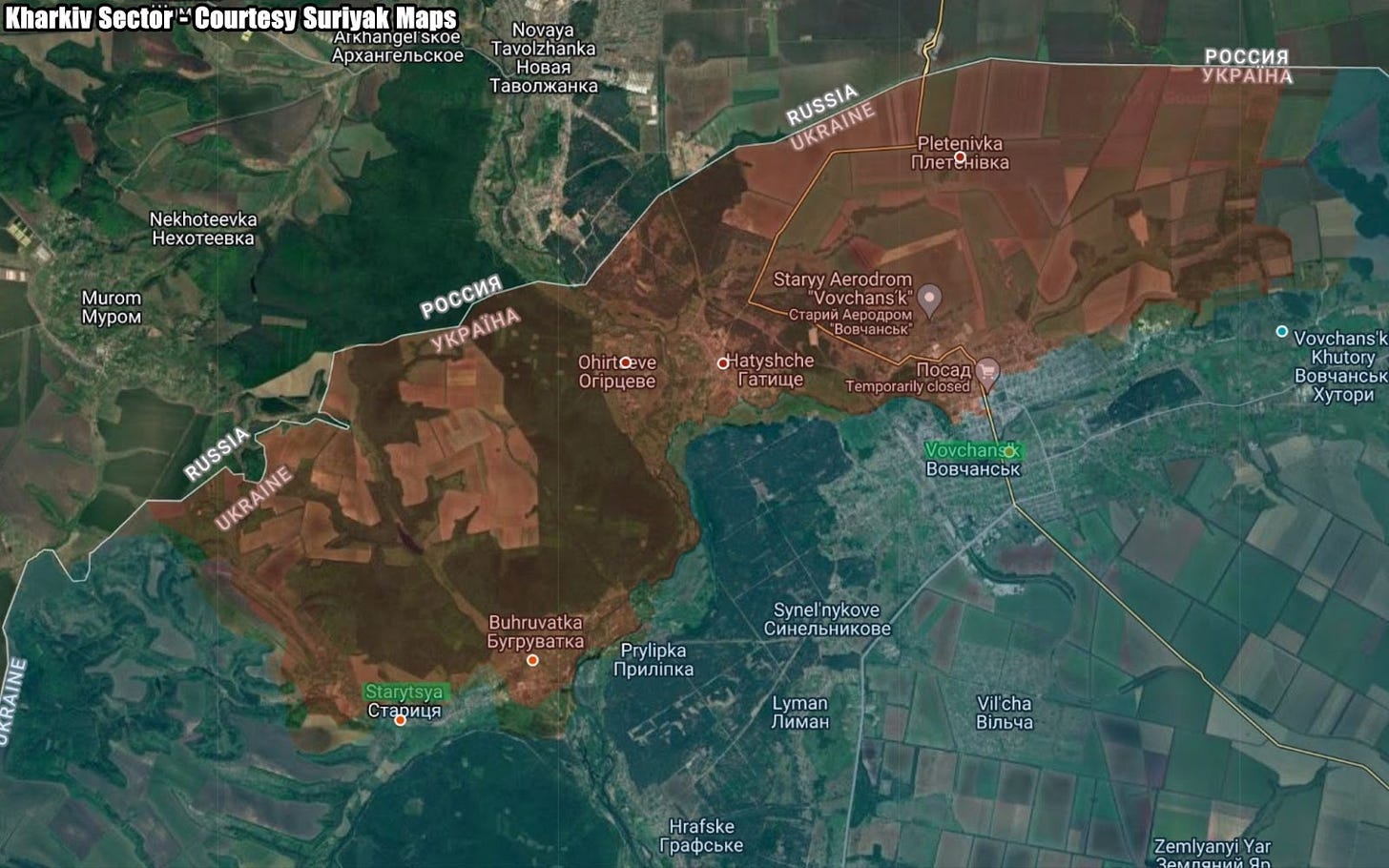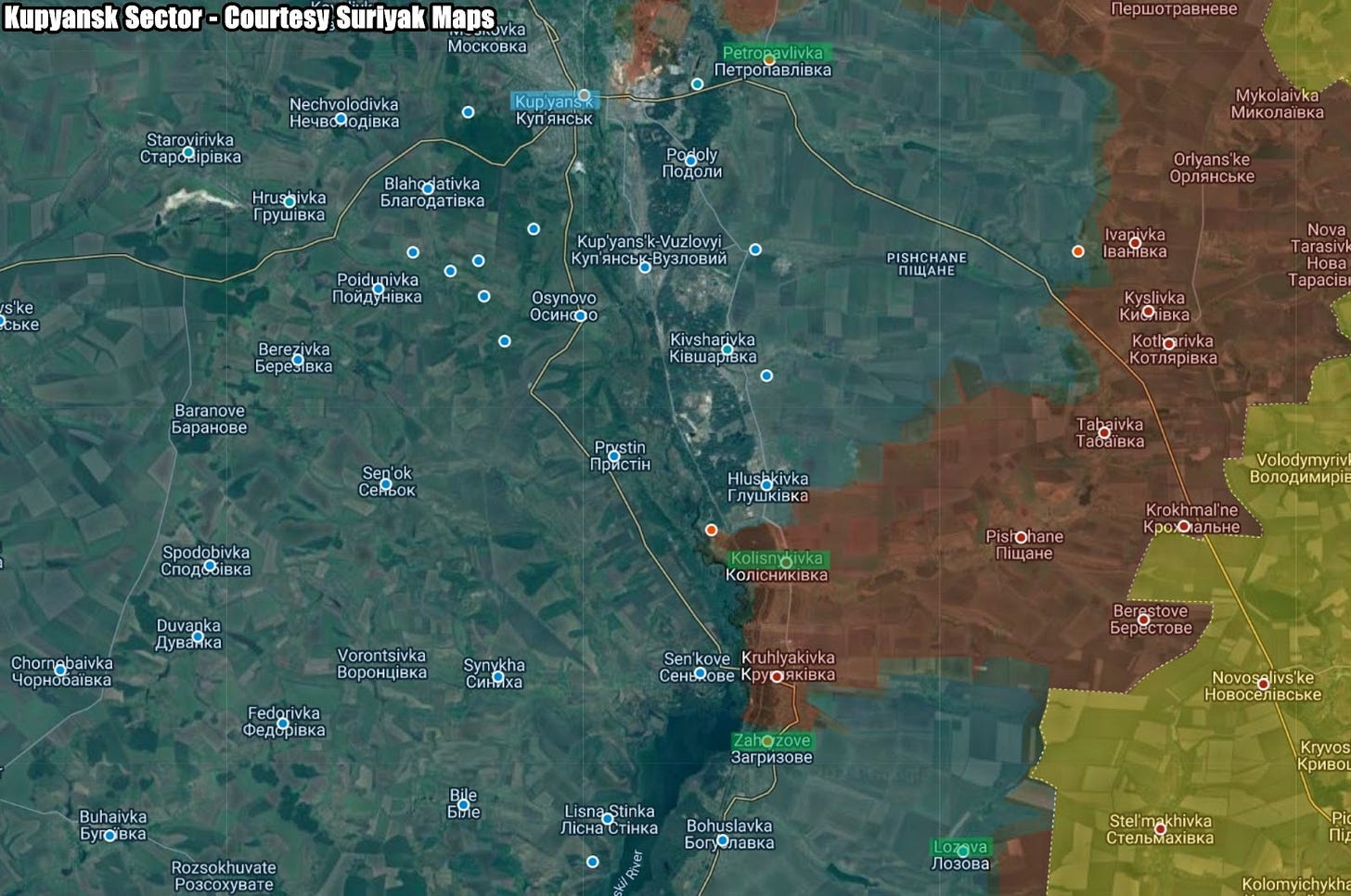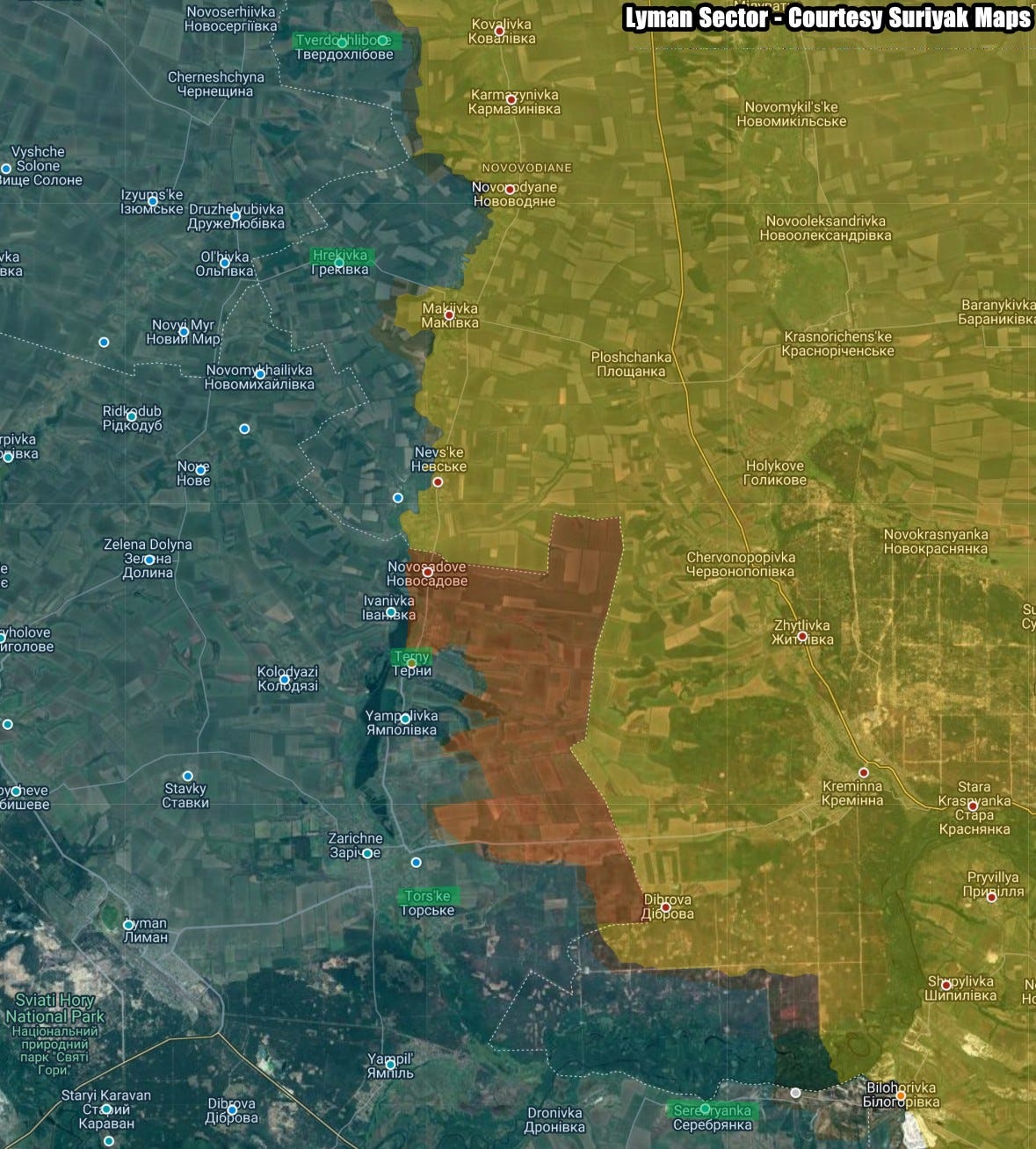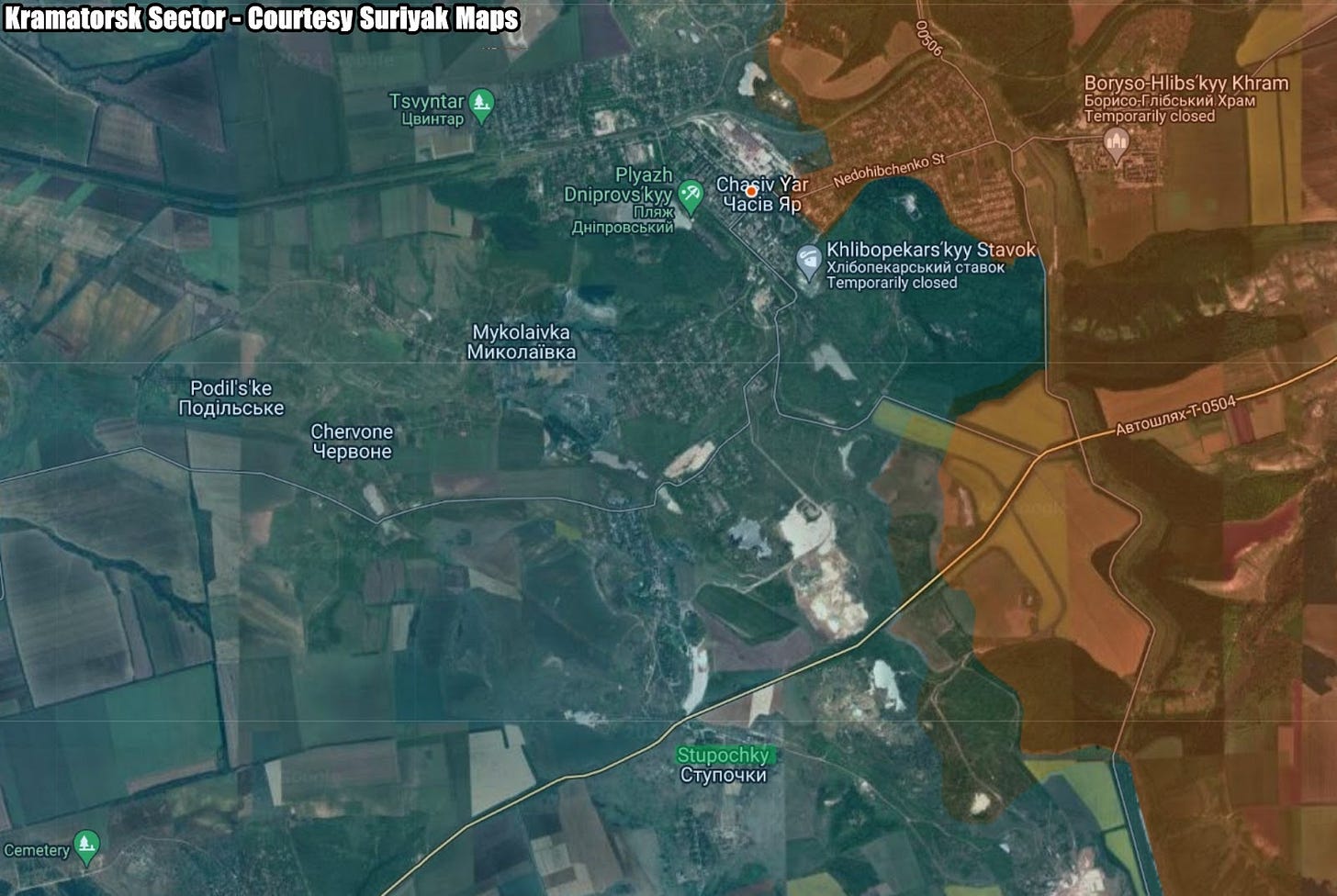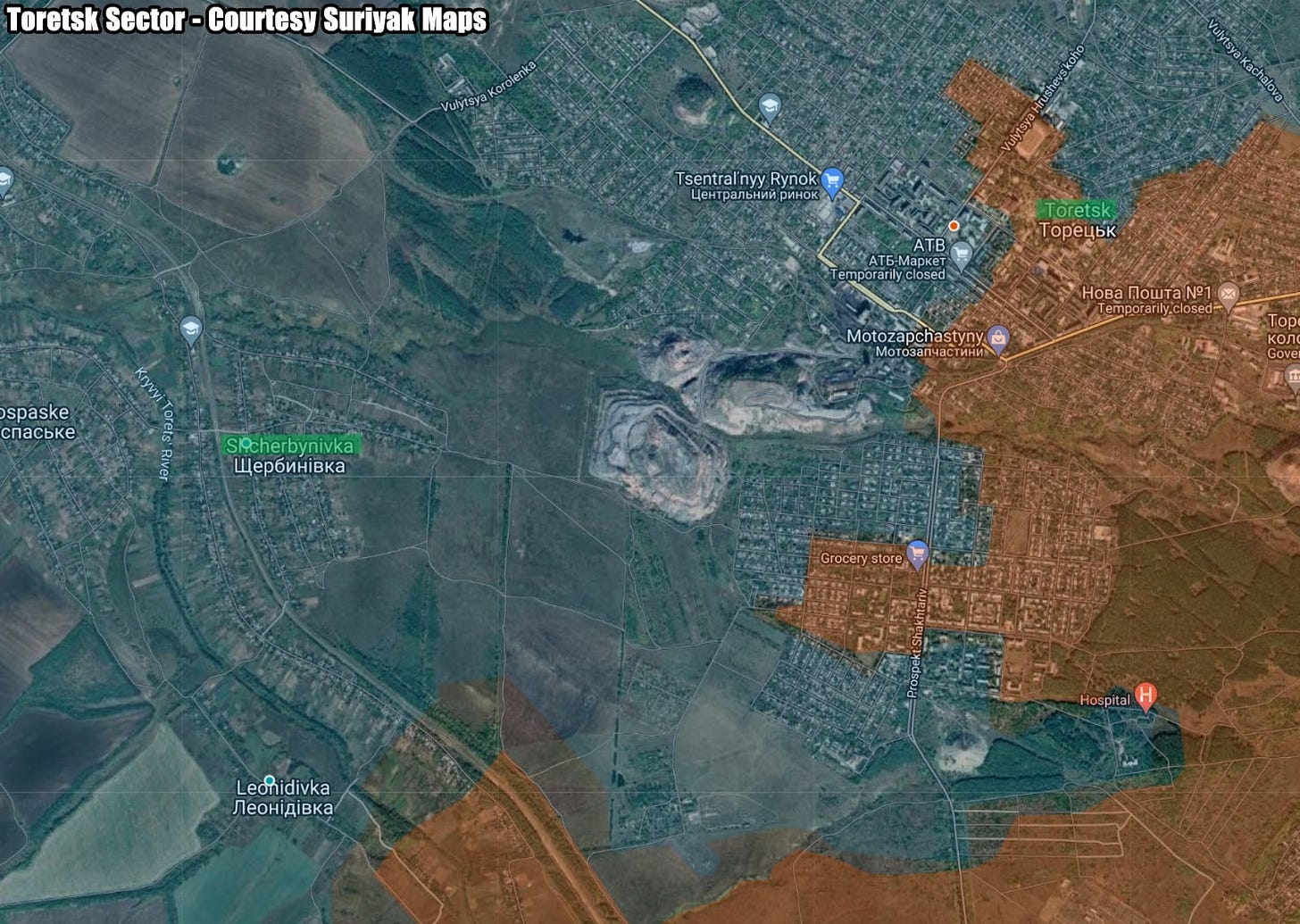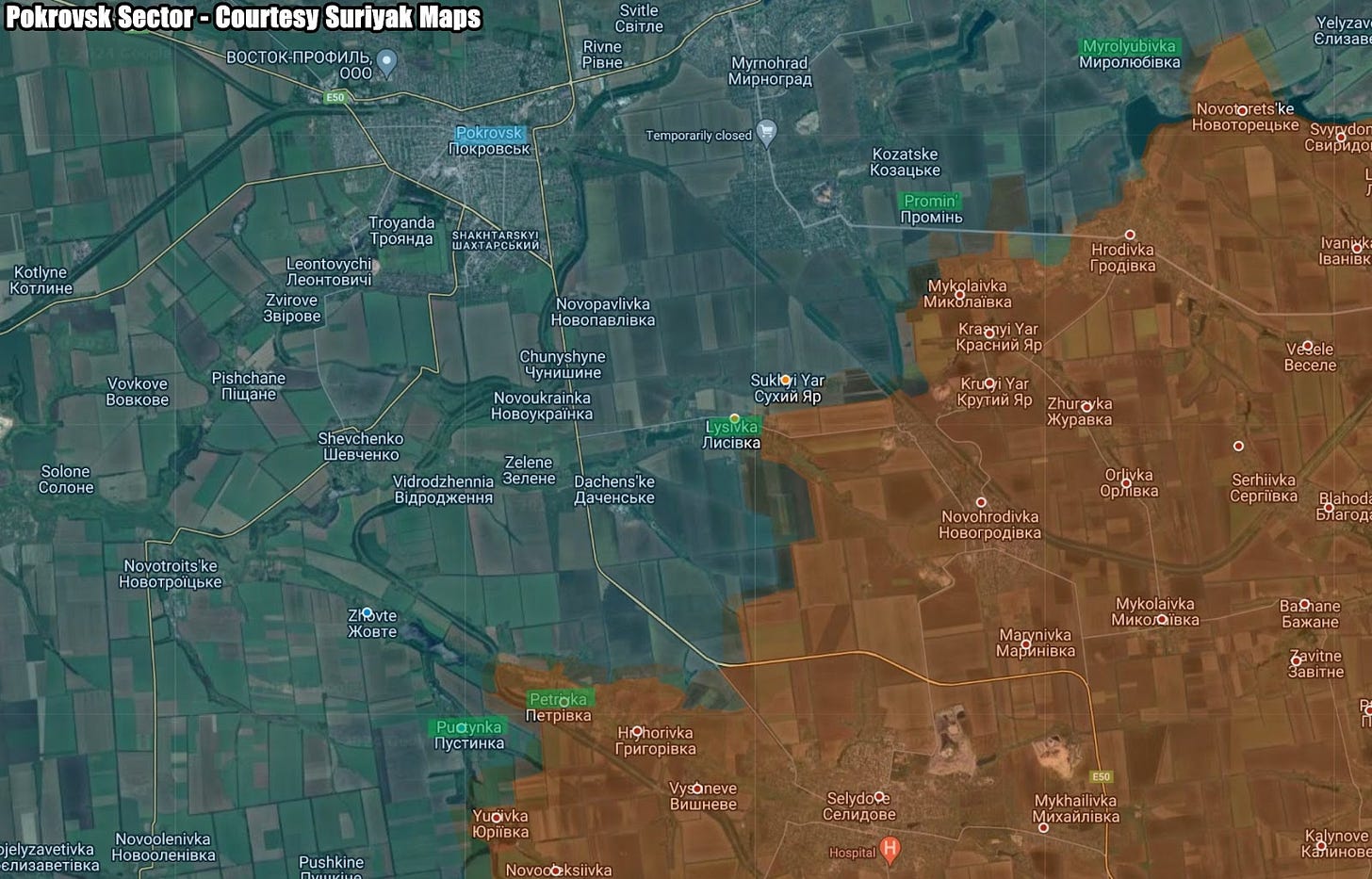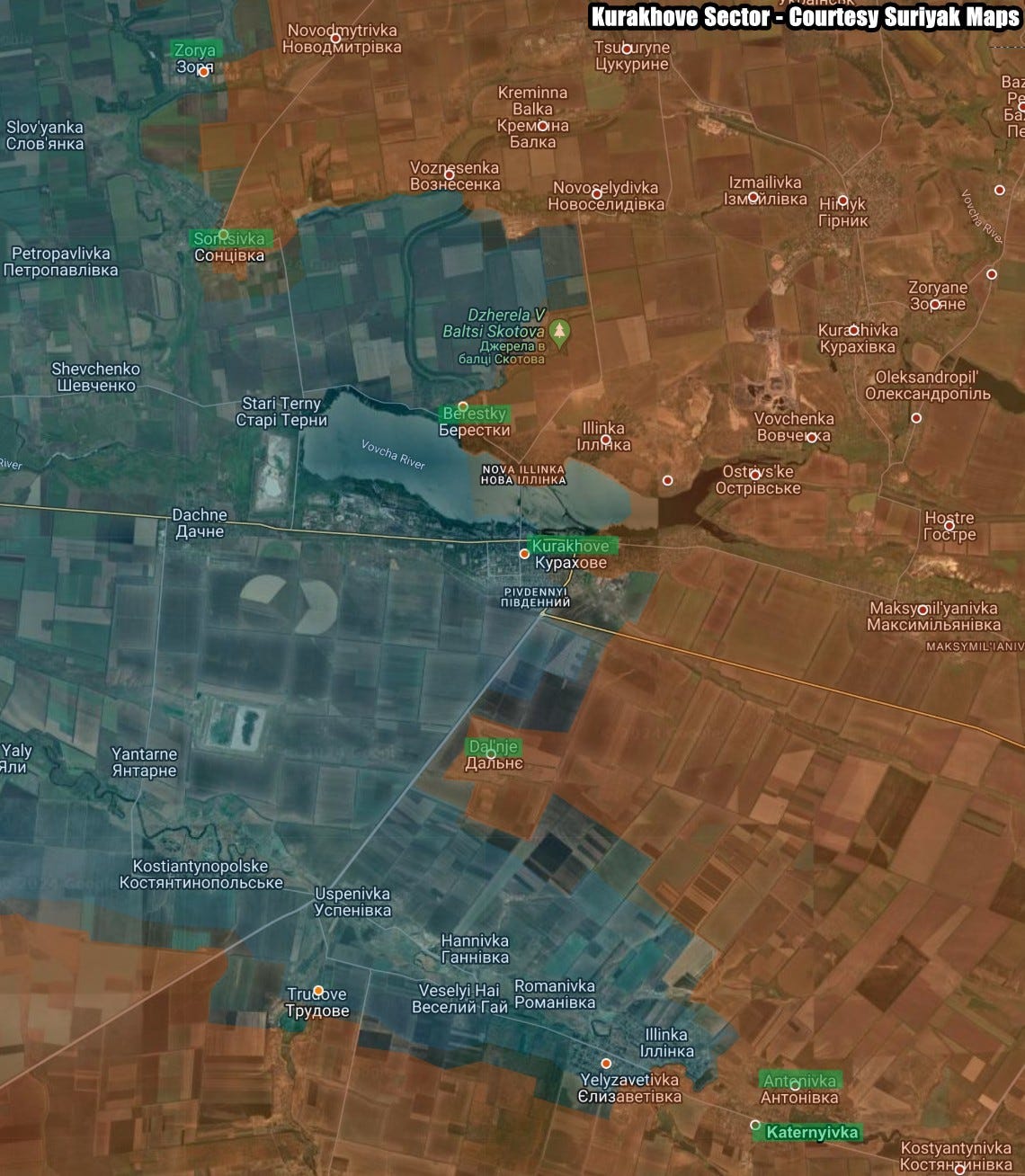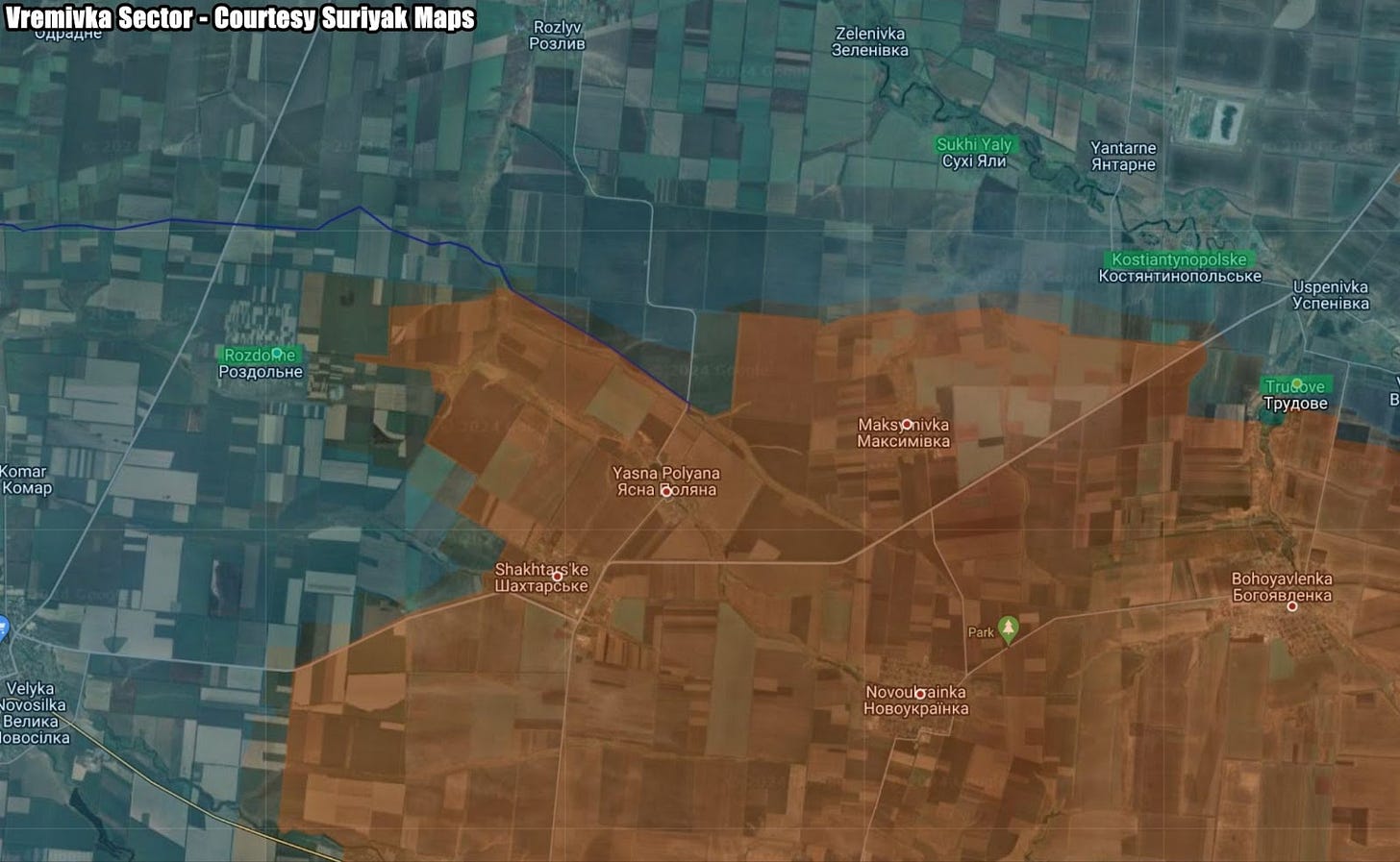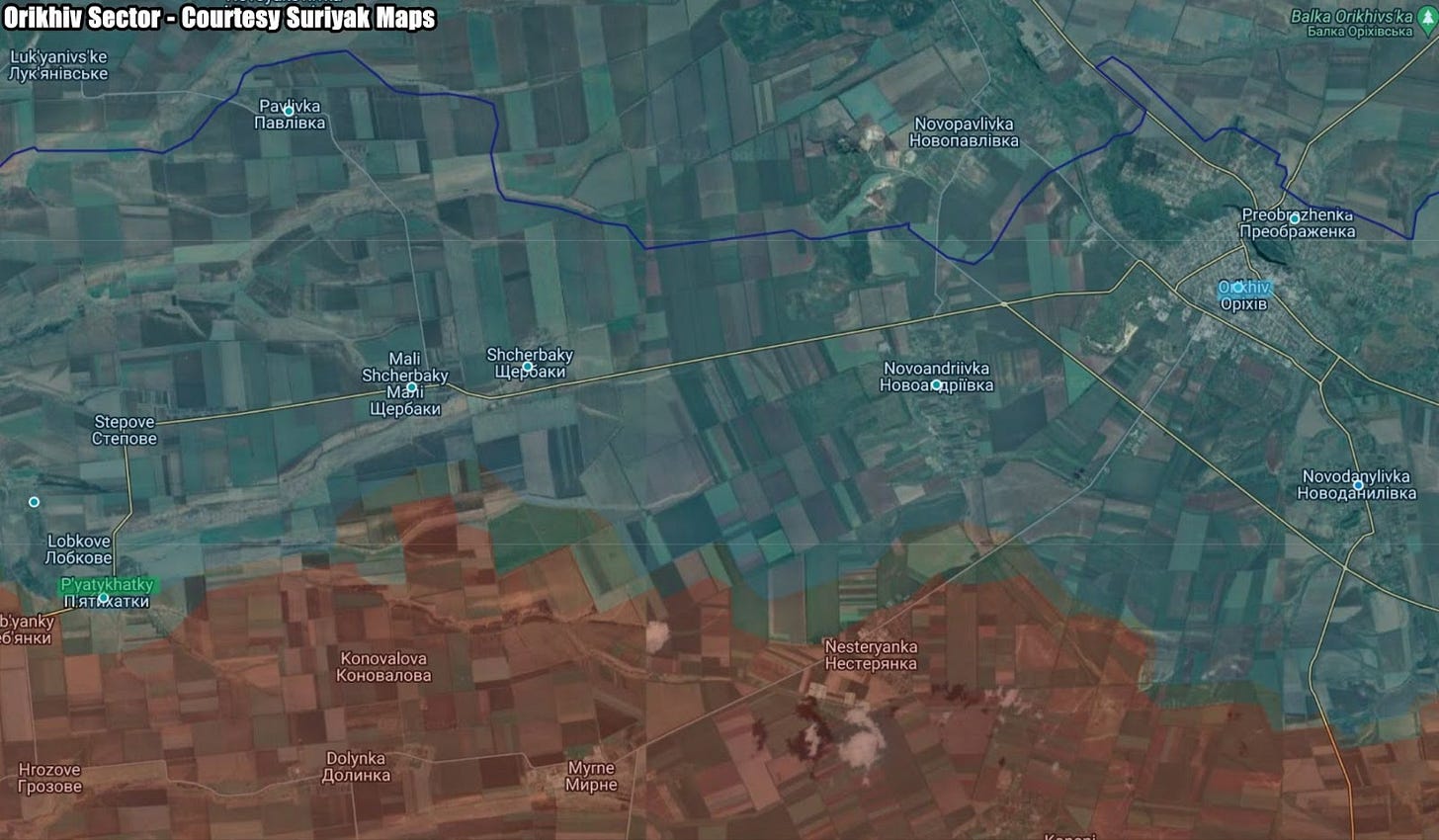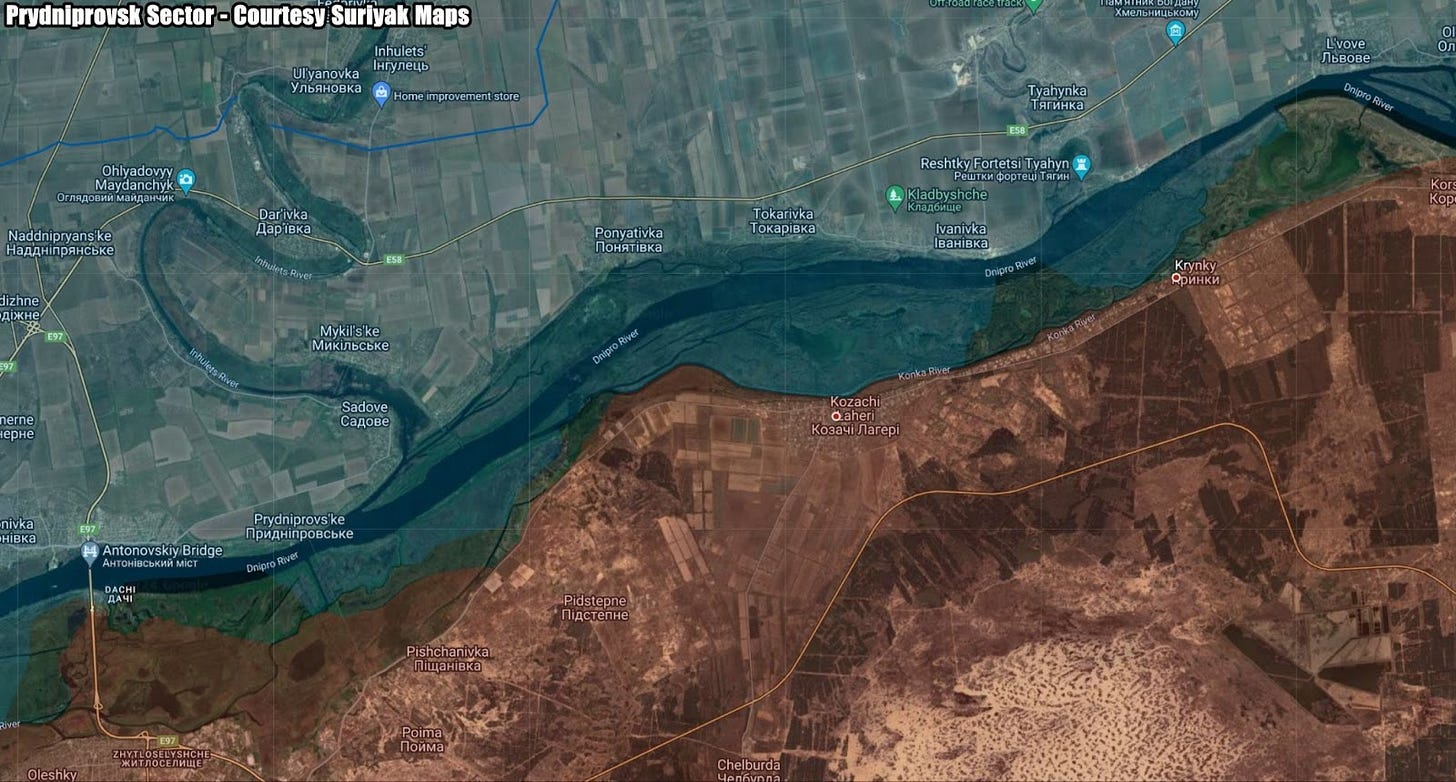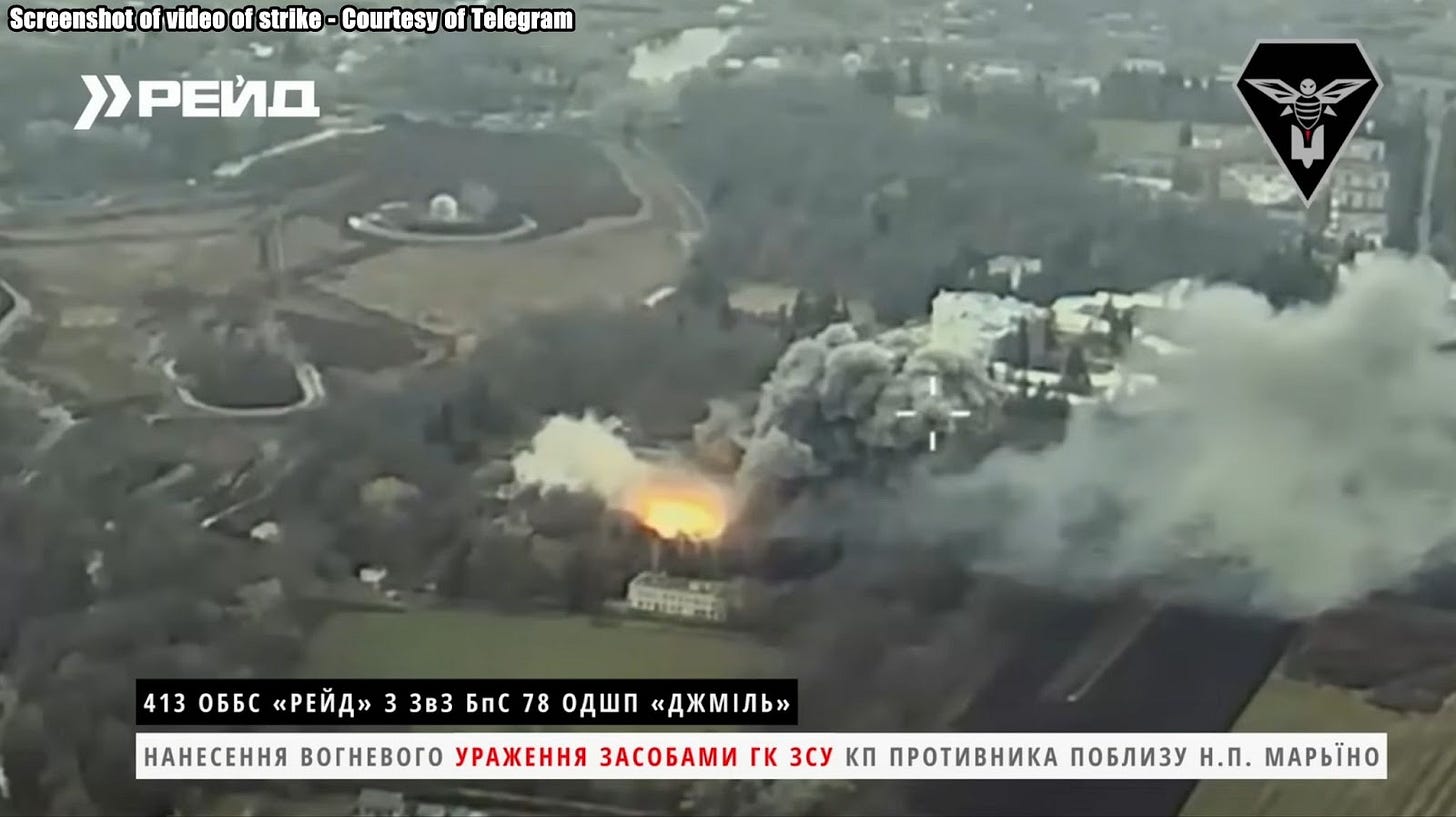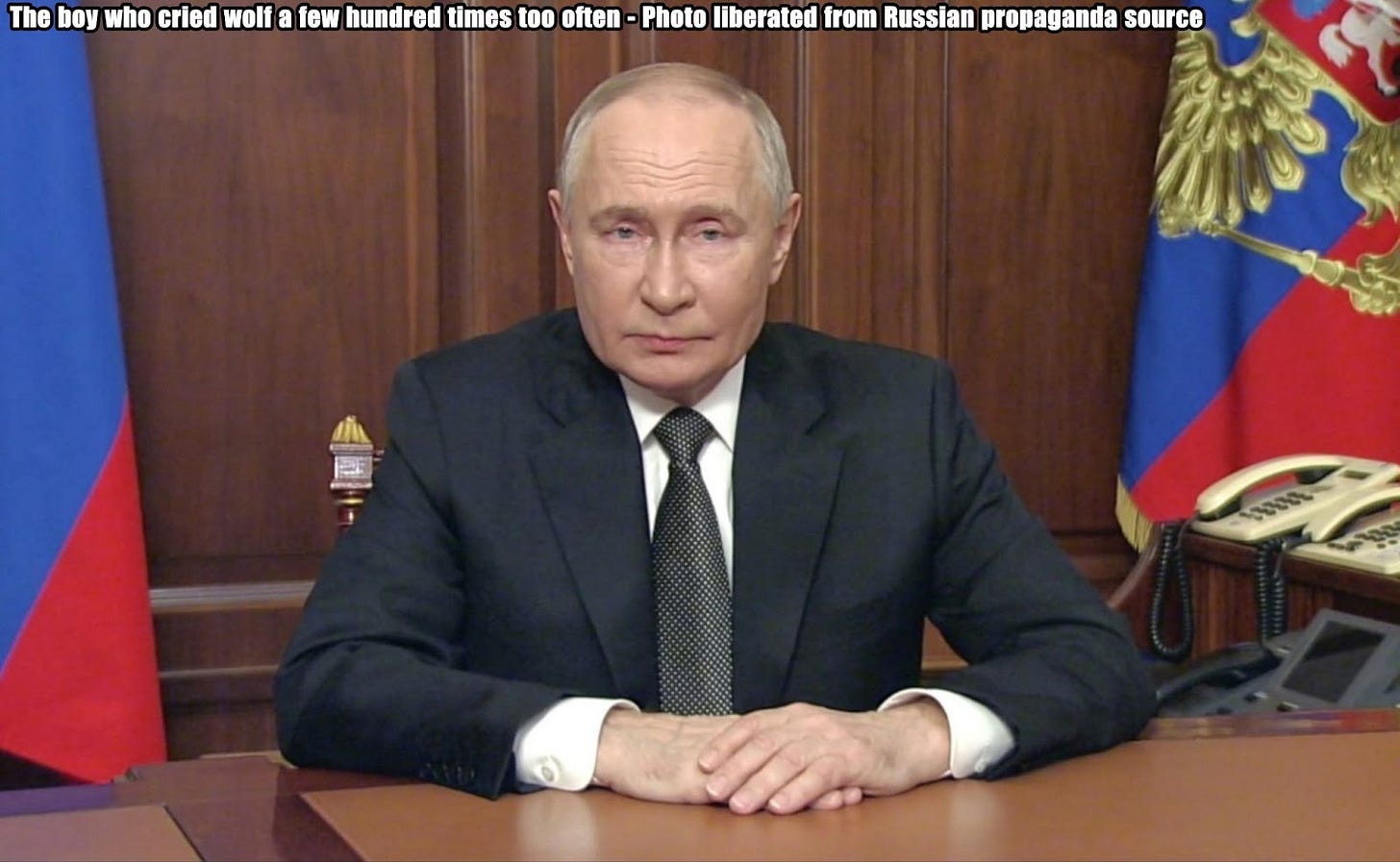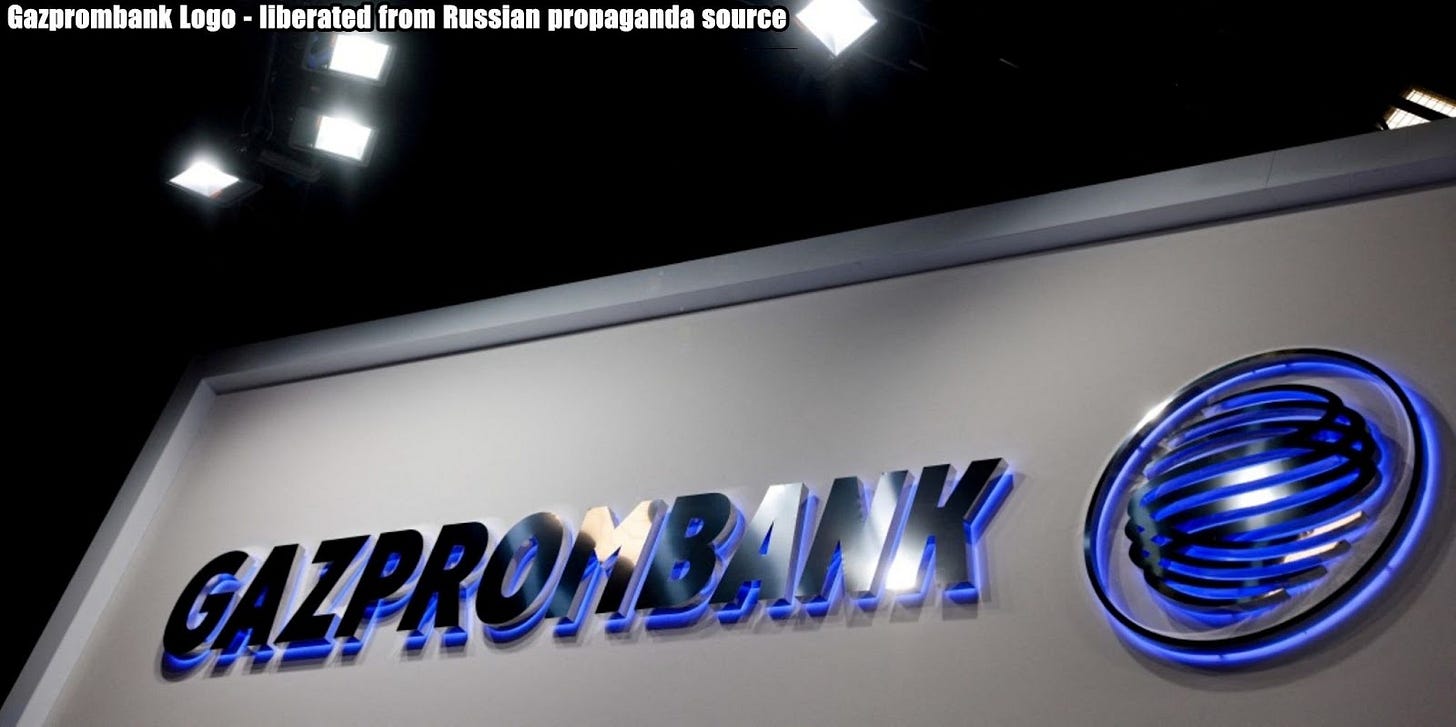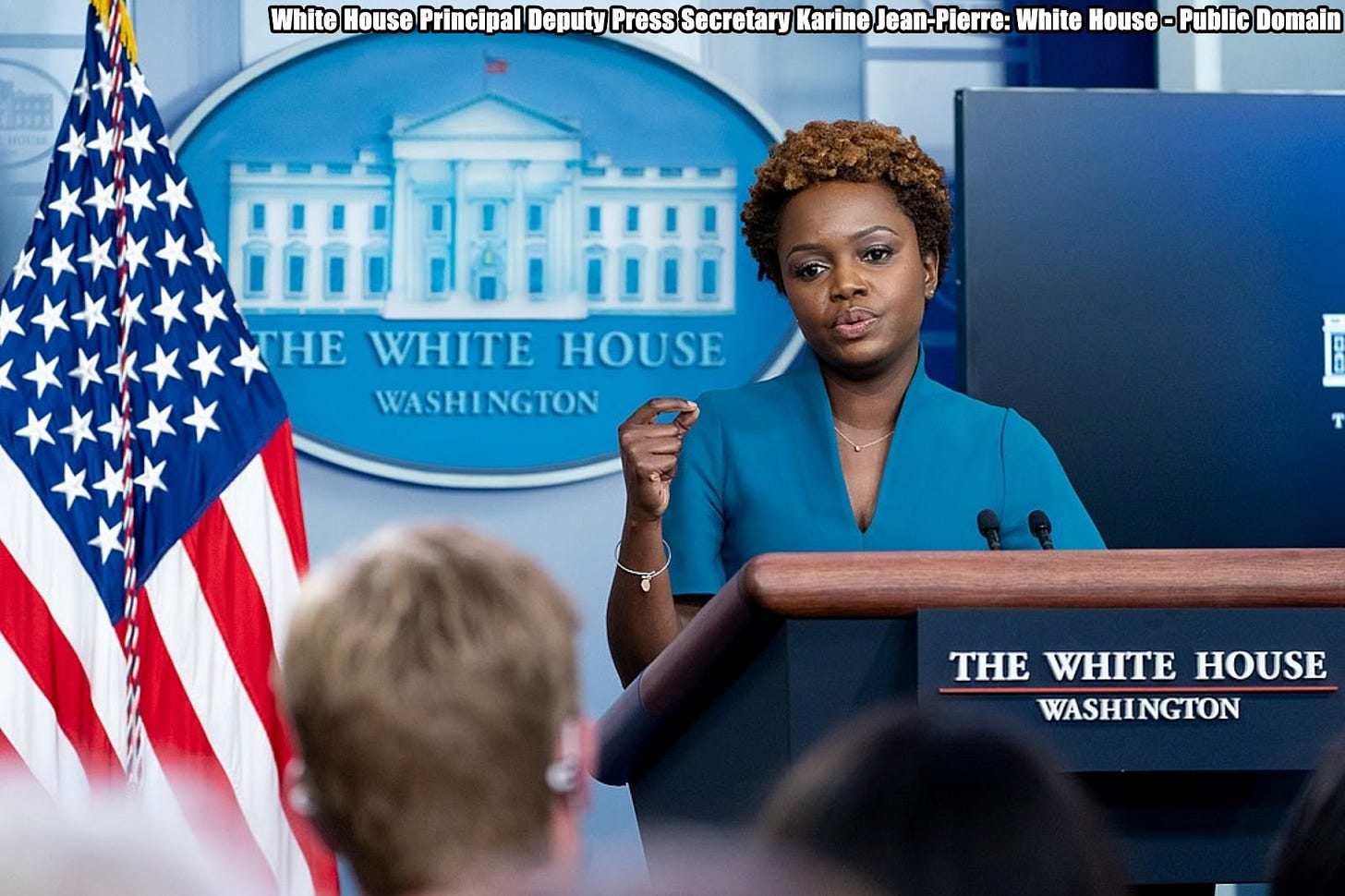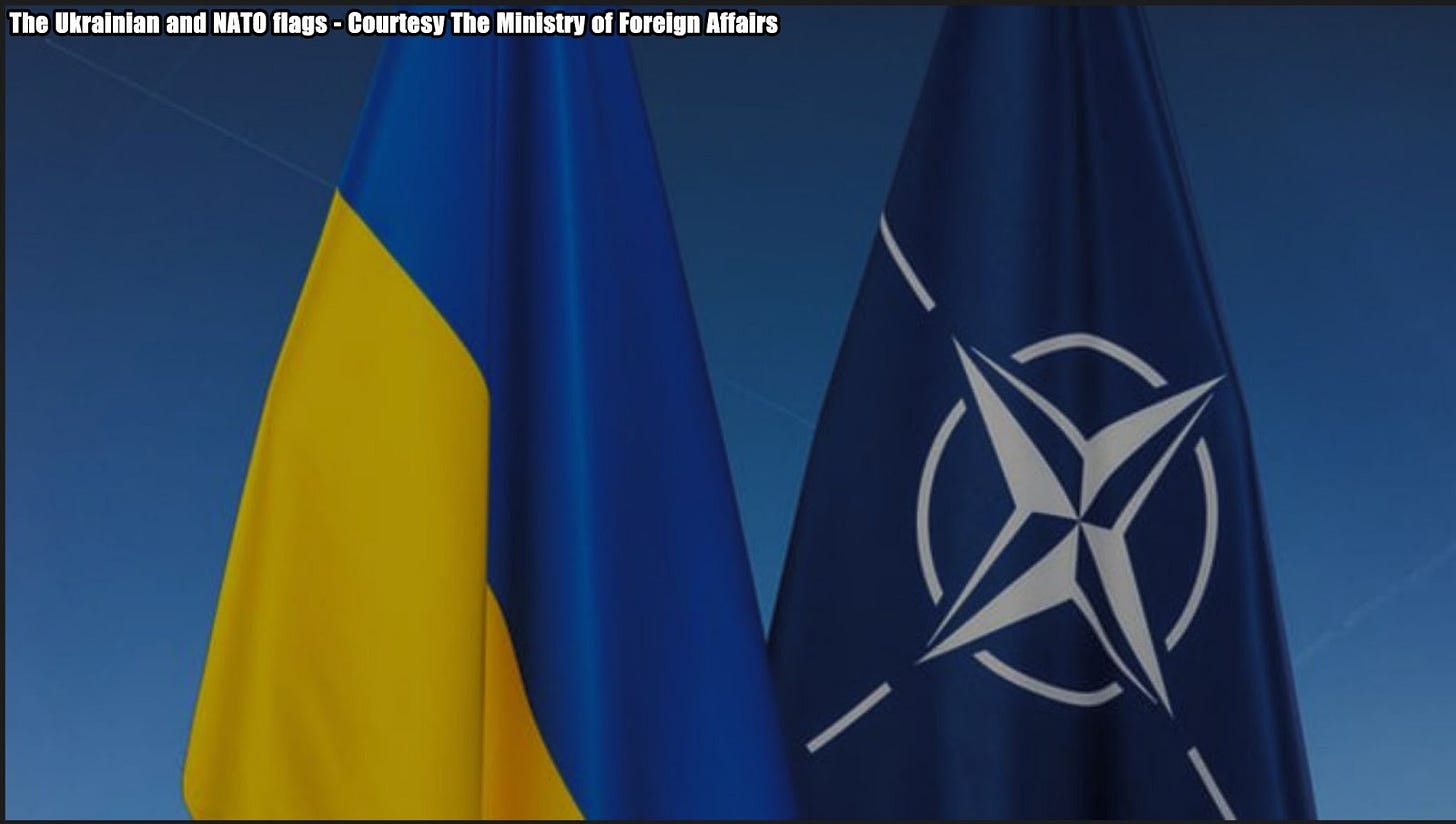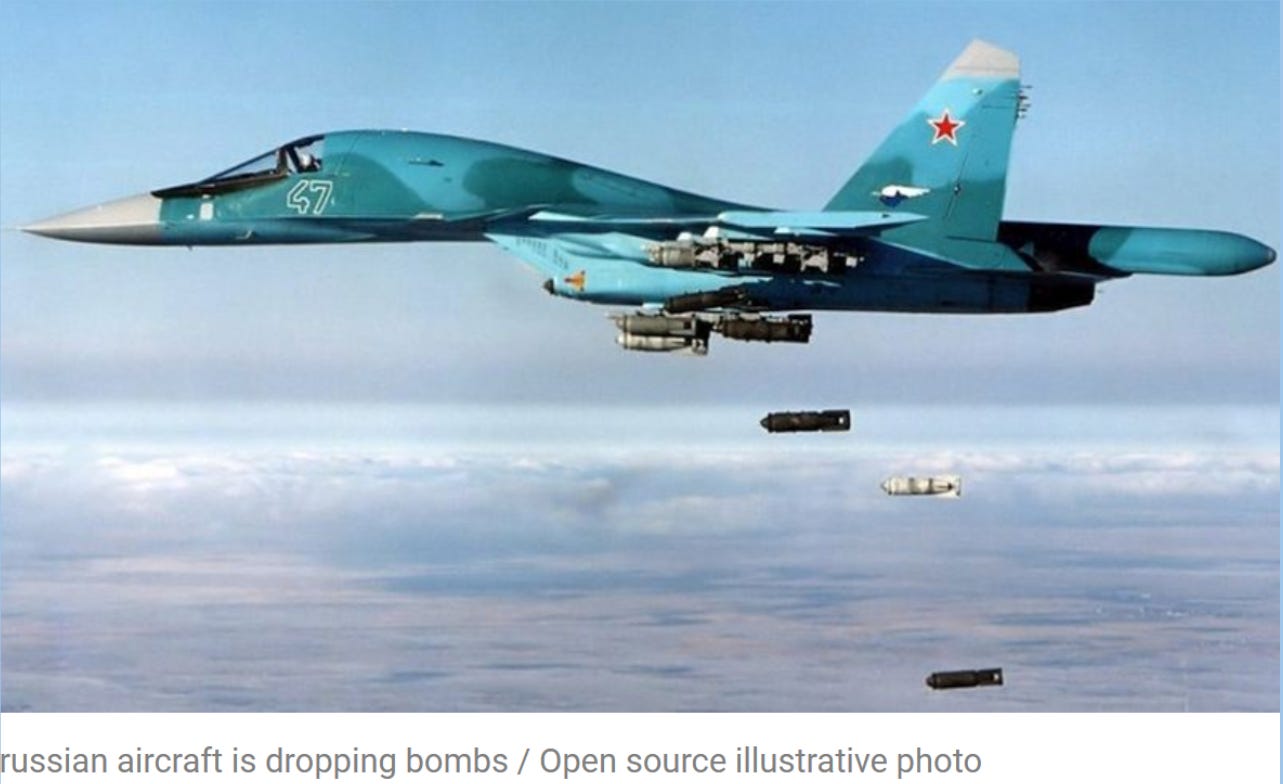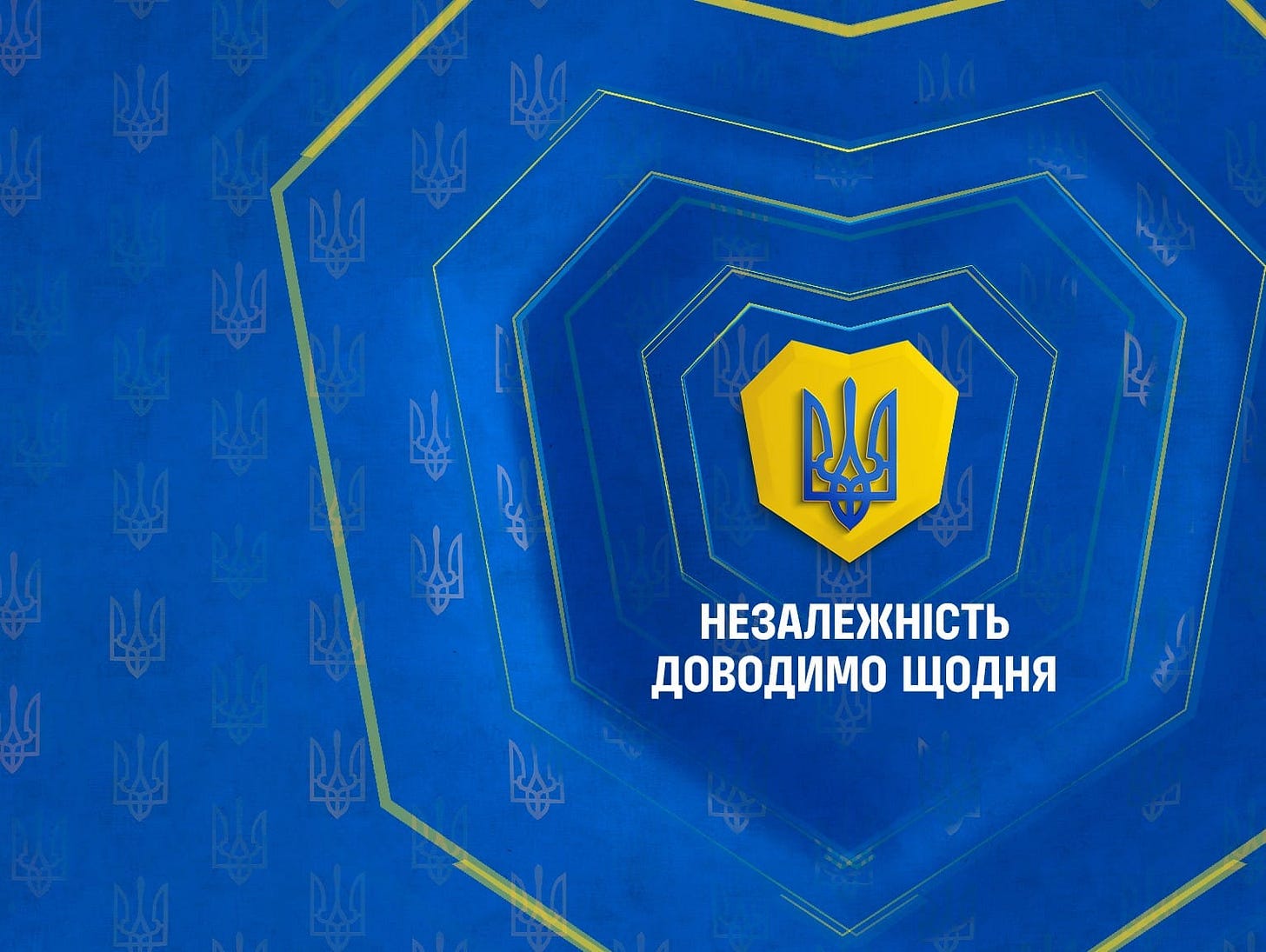Slava Ukraini! In early 2022 I began a Telegram channel aggregating news from a number of sources daily on the war in Ukraine. In June 2023 I began providing a daily draft for the Ukraine War Brief Podcast collecting news from over 70 sources daily, which formed the basis of the script. While the Podcast no longer exists I have continued to make this Brief available for my followers here on Substack for those who wish to keep up with the news from the war. A version of this Brief will also be made available on The People’s Media Substack for those who should choose to subscribe there.
All the latest news on the Russo-Ukraine War 6 days per week
ALONG THE CONTACT LINE
GSAFU Morning Report
The General Staff of the Armed Forces of Ukraine in its Operational Information update at 22:00 on Nov 21 stated that day 1003 of the full-scale invasion of the Russian Federation against Ukraine was about to begin.
During the past day, 174 combat engagements took place. Over the past 24 hours, the enemy carried out 4 missile strikes, 46 air strikes, 300 drone strikes and more than 3,000 artillery strikes across the positions of Ukrainian forces.
At the same time, Ukrainian soldiers continue to inflict losses in manpower and equipment on the occupying troops, exhausting the enemy along the entire front line and continue to disrupt the plans of Russian occupiers to advance deep into the territory of Ukraine.
Air Force Daily Report
Russia attacks have continued all day as such no report has been posted yet
The Russian Border Incursion
The Institute for the Study of War (ISW), a US based think tank, in its Nov 21 Russian Offensive Campaign Assessment reported that Russian forces recently marginally advanced southeast of Sudzha amid continued offensive operations in the main Ukrainian salient in Kursk Oblast. Geolocated footage published on Nov 21 shows that Russian forces recently marginally advanced west of Spalnoye (southeast of Sudzha). Russian milbloggers continued to claim that Russian forces cleared Ukrainian positions in the forests near Olgovka (east of Korenevo), entered Darino (southeast of Korenevo), are repelling Ukrainian counterattacks near the settlements. Elements of the Russian 26th Tank Regiment (47th Tank Division, 1st Guards Tank Army [GTA], Moscow Military District [MMD]) and 11th Airborne (VDV) Brigade are reportedly operating near Martynovka (northeast of Sudzha); elements of the "Aida" group of Chechen "Akhmat" Spetsnaz are reportedly operating in the Sudzha direction; and elements of the Russian 106th VDV Division, 44th Army Corps (AC) (Leningrad Military District [LMD]), and "Phoenix" Battalion are reportedly operating in Kursk Oblast.
Russian officials claimed that Russian forces repelled Ukrainian drone strikes near Akhtubinsk, Astrakhan Oblast, and a Russian insider source claimed that the drones may have targeted the Kasputin Yar missile launch site.
The recent Ukrainian strike against a Russian command post in Maino, Kursk Oblast reportedly injured a senior North Korean general. The Wall Street Journal (WSJ) cited a Western official that a recent Ukrainian strike against Kursk Oblast wounded a senior North Korean general, but the official did not provide details on the general's condition. Russian President Vladimir Putin confirmed on Nov 21 that Ukrainian forces struck a Russian "Northern" Group of Forces command post in Kursk Oblast and killed and wounded security personnel but claimed that the strike did not injure commanders.
A Russian insider source claimed on Nov 21 that the Ukrainian strike killed 18 Russian soldiers and wounded 33 personnel, including three North Korean personnel. The insider source claimed that LMD First Deputy Commander Lieutenant General Valery Solodchuk was at the headquarters at the time of the strike and that his status is unknown. ISW cannot confirm these claims.
The Khortytsia operational-strategic group
(Responsible for the northeastern part of Ukraine. )
Kharkiv Sector: Over the last day Ukrainian Defense Forces repelled 10 Russian attacks in the area of Starytsya and Vovchansk.
Kupyansk Sector: Russian Forces carried out 14 offensive actions against Ukrainian defensive positions near Petropavlivka, Kolisynivka, Zahryzove and Lozova. 2 engagements continue.
Lyman Sector: Russian Forces carried out 16 offensive actions against Ukrainian defensive positions near Tverdokhlibove, Hrekivka, Terny, Torske and Serebryanka. 3 engagements continue.
Siversk Sector: In this sector, over the last day, there has been no significant change in the combat environment.
Kramatorsk Sector: Russian forces carried out 3 unsuccessful offensive actions against Ukrainian defences in the vicinity of Stupochky.
Toretsk Sector: Over the last day Russian forces carried out 5 offensive actions with air support near Toretsk and Shcherbynivka.
The Tavria operational-strategic group
(Responsible for the central-eastern and southeastern part of Ukraine.)
Pokrovsk Sector : Over the past day, Russian Forces carried out 49 offensive actions against Ukrainian defensive positions in the vicinity Myrolyubivka, Promin, Lysivka, Petrivka and Pustynka. 11 engagements are ongoing. The situation is under control.
Kurakhove Sector: Over the last day in this district Russia conducted 26 offensive actions in the vicinity of Zorya, Sontsivka, Berestky, Kurakhove, Dalnje, Katernyivka and Antonivka. 11 engagements are ongoing.
Vremivka Sector: Russian forces made 14 attempts to break through Ukrainian defences in the vicinity of Novodarivka [not shown on map] Rozdolne, Sukhi Yaly, Kostiantynopolske and Trudove. 2 engagements are ongoing.
Orikhiv Sector: In this sector, over the last day, there has been no significant change in the combat environment. Russian forces made 1 unsuccessful attempt to dislodge Ukrainian units from their defensive positions near Pyatykhatky.
The Odesa operational-strategic group
(Responsible for Kherson, Qırım, (also known as Crimea) and the Black Sea.)
Prydniprovsk Sector: In this sector, over the last day, there has been no significant change in the combat environment. Russian forces made 3 unsuccessful attempts to dislodge Ukrainian units from their positions on the left bank of the Dnipro.
TEMPORARILY OCCUPIED TERRITORIES
Nothing major to report.
THE HOME FRONT
Shahed drones that hit Sumy equipped with shrapnel munitions, regional governor says
Russian Shahed-type drones that attacked Sumy overnight were equipped with shrapnel munitions, The Kyiv Independent reported on Nov. 22 citing Regional Governor Volodymyr Artiukh.
Russia struck a residential area in the city killing two people and injuring 12, according to local officials.
"These weapons are used to kill people. Not to destroy structures, just to kill more people," Artiukh said in a video uploaded to the Sumy Regional Military Administration's Telegram channel.
"Just as the previous missile strike [had] cluster munitions, today again drones [are] equipped with shrapnel," he added.
"The same goes for other strikes, in other places where private homes were hit, people were injured and killed. This is pure genocide."
The Sumy regional prosecutor's office is conducting a pre-trial investigation into potential "war crimes resulting in the deaths of people."
Sumy Oblast borders Russia's Bryansk, Kursk, and Belgorod oblasts. Residents of the vulnerable border communities experience multiple attacks per day.
RUSSIAN WORLD
Storm Shadow strike kills Russian general in Russia’s Kursk Oblast, source claims
On Nov 20, a missile strike targeted an underground facility at a sanatorium belonging to the Russian Presidential Affairs Directorate in Maryino, Kursk Oblast, reportedly resulting in significant casualties among Russian and North Korean military personnel.
As Defense Express previously speculated, the nature of the target and the deployment of multiple cruise missiles strongly suggested the objective was a gathering of senior Russian and North Korean command staff.
Unofficial confirmations began emerging a day after the strike. The Telegram channel Spy Dossier (dosye_shpiona), known for its insider information, reported that the attack on the command post killed 18 military personnel and injured 33 others. Among the wounded were three North Korean military representatives: two male officers and a female medic, although it is more plausible that she was serving as a translator.
The casualties reportedly included numerous Russian officers from the Southern and Eastern Military Districts. Among them was Lieutenant General Valery Solodchuk, First Deputy Commander of the Leningrad Military District and former commander of the 1st Army Corps of the so-called DPR in 2014.
Furthermore, during an effort to neutralise unexploded ordnance, 13 russian sappers were injured, including the deputy chief of staff of the 88th Mechanised Brigade.
The presence of such high-ranking personnel during the post-strike cleanup may indicate that the casualties extended beyond officers and a single general.
North Korean General Wounded in Ukrainian Missile Strike on Kursk Region
A North Korean general was wounded in a Ukrainian missile strike on southwestern Russia’s Kursk region, the Wall Street Journal reported Thursday, citing anonymous Western officials.
Ukraine on Wednesday fired at least 10 U.K.-supplied Storm Shadow missiles at the Maryino estate, a site located around 32 kilometres (20 miles) from the front lines in the Kursk region, Western and Ukrainian officials said.
The estate reportedly housed a Russian army command post and a communications hub, with North Korean generals allegedly present during the attack, according to Ukrainian media.
Sources cited by the Wall Street Journal did not reveal the identity of the North Korean general alleged to have been wounded in the attack, nor did they give details on his injuries. However, Ukrainian and South Korean officials previously told the newspaper that Pyongyang sent Colonel General Kim Yong Bok to oversee North Korea’s coordination with Russia.
Russia’s military confirmed Thursday that British-supplied Storm Shadow missiles were used in the attack, while local territorial defence forces in the Kursk region claimed a total of 12 missiles were launched at the Maryino estate, which officially operates as a sanatorium under the Russian presidential directorate.
Western officials accuse North Korea of deploying around 10,000 soldiers to the Kursk region, where Ukrainian forces carried out a surprise cross-border incursion in early August.
In exchange for its support, North Korea has reportedly received air defence missiles and other military equipment from Russia, according to South Korea’s National Security Adviser Shin Wonsik, who spoke to local media Friday.
Russia says hypersonic missile strike on Ukraine was a warning to 'reckless' West
The Kremlin said on Friday that a strike on Ukraine using a newly developed hypersonic ballistic missile was a message to the West that Moscow will respond harshly to any "reckless" Western actions in support of Ukraine. Reuters reports.
Kremlin spokesman Dmitry Peskov was speaking a day after President Vladimir Putin said Moscow had fired the new missile - the Oreshnik or Hazel Tree - at a Ukrainian military facility in response to Kyiv striking Russia with U.S.-made and British-made missiles this week for the first time after the U.S. granted its approval.
"The main message is that the reckless decisions and actions of Western countries that produce missiles, supply them to Ukraine, and subsequently participate in strikes on Russian territory cannot remain without a reaction from the Russian side," Peskov told reporters.
"The Russian side has clearly demonstrated its capabilities, and the contours of further retaliatory actions in the event that our concerns are not taken into account have been quite clearly outlined," he said.
Moscow has said it regards Ukraine's firing of ATACMS and Storm Shadow missiles into Russia as proof of direct U.S. and British involvement in the war. It says satellite targeting data and the actual programming of the missiles' flight paths must be done by NATO military personnel because Kyiv does not have the capabilities itself.
Putin said Moscow had struck a missile and defence enterprise in the Ukrainian city of Dnipro, where missile and space rocket company Pivdenmash, known as Yuzhmash by Russians, is based.
Russia's Defence Ministry said on Friday that all of the missile's warheads had hit their targets and hailed what it said was its first successful use of an intermediate-range hypersonic ballistic missile with conventional warheads in combat.
Ukrainian President Volodymyr Zelenskiy has said Russia's use of the new missile amounts to "a clear and severe escalation" and has called for strong worldwide condemnation.
Peskov said Russia had not been technically obliged to warn the United States about the strike because the missile used had been intermediate-range rather than intercontinental, but he said Moscow had informed the U.S. 30 minutes before the launch anyway.
He said Putin remained open to dialogue, but that the outgoing administration of U.S. President Joe Biden "prefers to continue down the path of escalation" and urged it to heed a warning Putin issued in September.
ISW: Putin’s Nov 21 statement after Russian missile strike just more empty sabre rattling
The Institute for the Study of War (ISW), a US based think tank, in its Nov 21 Russian Offensive Campaign Assessment reported that Putin’s Nov 21 statement demonstrates that Moscow’s constant sabre-rattling largely remains rhetorical. Putin's recent threats against the West have centred on Western states allowing Ukraine to conduct long-range strikes into “Russian territory,” but Ukrainian forces have been striking what the Kremlin illegally defines as “Russian territory” for a long time. The Kremlin has illegally defined occupied Crimea as part of Russia since Russia's illegal annexation of Crimea in 2014, and Ukrainian forces have routinely struck Crimea with US-provided ATACMS and UK-provided Storm Shadow missiles since April 2023.
The Kremlin's application of its "red lines" rhetoric has been wildly inconsistent, undermining the overall Russian escalation narrative. Putin consistently escalates the war on his own without regard to Western decisions and has consistently declined to retaliate every time Western states have deepened their support of Ukraine.
Putin previously threatened severe retaliation if Western states provided Ukraine with rocket artillery, tanks, warplanes, and the ability to strike into Russia, and Putin has constantly shifted the goalposts every time the West has called Putin’s bluff.
Neither the Oreshnik ballistic missile strike nor Putin's Nov 21 statement represent a significant inflection in Russian strike capabilities or likeliness to use a nuclear weapon. Russian forces fire nuclear-capable Iskander ballistic missiles, Kinzhal hypersonic ballistic missiles, and nuclear-capable Kh-101 cruise missiles against Ukraine on a regular basis. Previous Russian missile strikes have targeted industrial and critical infrastructure including within Dnipro City that caused greater damage.
The only fundamentally new characteristic of the Russian strikes against Dnipro City on November 21 was the Oreshnik missile itself, which ostentatiously showcased reentry vehicles to amplify the spectacle of the strike and further imply a nuclear threat. The West maintains credible deterrence options and Putin's nuclear sabre-rattling should not constrain Western officials from choosing to further aid Ukraine.
US Central Intelligence Agency (CIA) Director Bill Burns cautioned Western policymakers against fearing Putin's nuclear rhetoric in September 2024, describing Putin as a "bully" who will "continue to sabre rattle from time to time."
Gazprombank Warns of UnionPay Card Issues Abroad Following U.S. Sanctions
Russia’s Gazprombank has alerted clients abroad to potential payment disruptions with China’s UnionPay cards after being targeted by new U.S. sanctions, the Moscow Times reported on Friday, citing RBC news.
“There may be difficulties with the UnionPay payment system cards abroad from Nov. 21. If you are outside Russia, we recommend using cash,” Gazprombank said in a statement.
UnionPay issued a similar advisory to its Russian cardholders regarding international use.
Gazprombank, the largest Russian lender not previously subject to U.S. sanctions, was one of over 50 Russian financial institutions targeted by the U.S. Treasury on Thursday. Despite the sanctions, Gazprombank said its domestic operations remain unaffected.
Russian banks began issuing UnionPay cards after Visa and Mastercard suspended services in Russia following the country’s full-scale invasion of Ukraine in 2022. However, UnionPay cardholders from Russian banks have since reported challenges making payments in the U.S., Israel, Europe, Asia and the Middle East.
The U.S. has warned foreign financial institutions of secondary sanctions if they help Russia bypass restrictions.
INTERNATIONAL NEWS
White House sees no indication of Russia preparing to use nuclear weapons in Ukraine
The Biden administration has not seen any "indications of Russia preparing to use a nuclear weapon in Ukraine," White House Press Secretary Karin Jean-Pierre said on Nov. 21. The Kyiv Independent reports.
Speaking at a press briefing, Jean-Pierre also said the administration was "not surprised by Russia's announcement that it would update its nuclear doctrine," and they believed it was "irresponsible rhetoric."
Russian President Vladimir Putin approved the country's new nuclear doctrine on Nov. 19. Kremlin spokesperson Dmitry Peskov said the changes should be seen as a "certain signal" to the West.
"This is more of the same irresponsible rhetoric that we continue to hear from Russia, which we have seen for more than two years now, if you think about their aggression, their war against Ukraine," Jean-Pierre said.
"We haven’t seen any indications of Russia preparing to use a nuclear weapon in Ukraine. We just have not seen that.
"And observing no changes to Russia’s nuclear posture, we have not seen any reason to adjust our own nuclear posture or doctrine in response to Russia’s statements."
Deputy Pentagon Press Secretary Sabrina Singh on Nov. 20 also dismissed Russia’s rhetoric surrounding its nuclear policy as a continuation of its behaviour over the past two years.
Since the start of its full-scale invasion of Ukraine in February 2022, Russia has made a series of nuclear threats against Ukraine and the West, none of which have materialised.
NATO and Ukraine to hold emergency meeting over Russian missile strike
NATO and Ukraine will hold an emergency meeting in Brussels on Nov. 26 regarding Russia’s launch of an experimental intermediate-range hypersonic missile, AFP reported, citing diplomats.
Ambassadors from countries in the NATO-Ukraine Council will meet on Tuesday to discuss the strike on the city of Dnipro, officials told AFP.
Russian President Vladimir Putin said on Thursday Moscow had hit Ukraine using a new-generation intermediate-range missile -- which he hinted was capable of unleashing a nuclear payload.
A spokeswoman for NATO said: "Deploying this capability will neither change the course of the conflict nor deter NATO allies from supporting Ukraine."
Putin said in an address to the nation the missile strike was in response to Ukraine firing long-range weapons supplied by the United States and Britain into Russia.
The Kremlin leader also warned that Moscow felt "entitled" to hit military facilities in countries that allow Ukraine to use their weapons against Russia.
Ukraine recently fired US- and UK-supplied longer-range missiles at Russian territory for the first time, ramping up already sky-high tensions over the conflict, which is nearly in its third year.
Leading NATO power the United States accused Russia of "escalating at every turn" in Ukraine.
MILITARY & TECH
UK Defense Intelligence Explains Why Russia’s Tactical Aviation Takes Center Stage
The UK Ministry of Defence in their Nov 22 Intelligence Update on Ukraine stated that over 1,000 days into the full-scale invasion, Russia's Aerospace Forces, despite technological and numerical advantage, have failed to gain air superiority over Ukraine. Russia has resorted to using their tactical level aviation, such as SU-34 aircraft, as airborne artillery.
The major development which has changed the nature of the conflict has been the use of unmanned aerial vehicles. Since mid-2024, the number of one way attack UAV launches has likely allowed Russia the space and time to recuperate its long range aviation fleet, and their associated air launched cruise missile and air launched ballistic missile stocks. Whilst Russia retains the ability to use these assets, the ultimate effect is that the air defence picture for Ukraine is increasingly busy, complex and challenging. With this combination of systems the Russians have consistently targeted Ukrainian critical national infrastructure and air bases. Future strikes against Ukrainian infrastructure are expected this winter, as Russia attempts to break the will of the Ukrainian people.
Ukraine has successfully used UAVs against military targets in Russia. In mid and late September Ukraine struck four Russian strategic ammunition depots hundreds of kilometres from Ukraine. The total tonnage of ammunition destroyed across the sites represents the largest loss of Russian, and North Korean supplied, ammunition during the war. The attacks again highlight Russia's inability to protect strategic military sites from Ukrainian UAV attack.
That’s it for today’s Brief folks if you would like to keep up with events in Ukraine daily please consider subscribing.
Feel free to share this update with your friends. Heroyam Slava!







